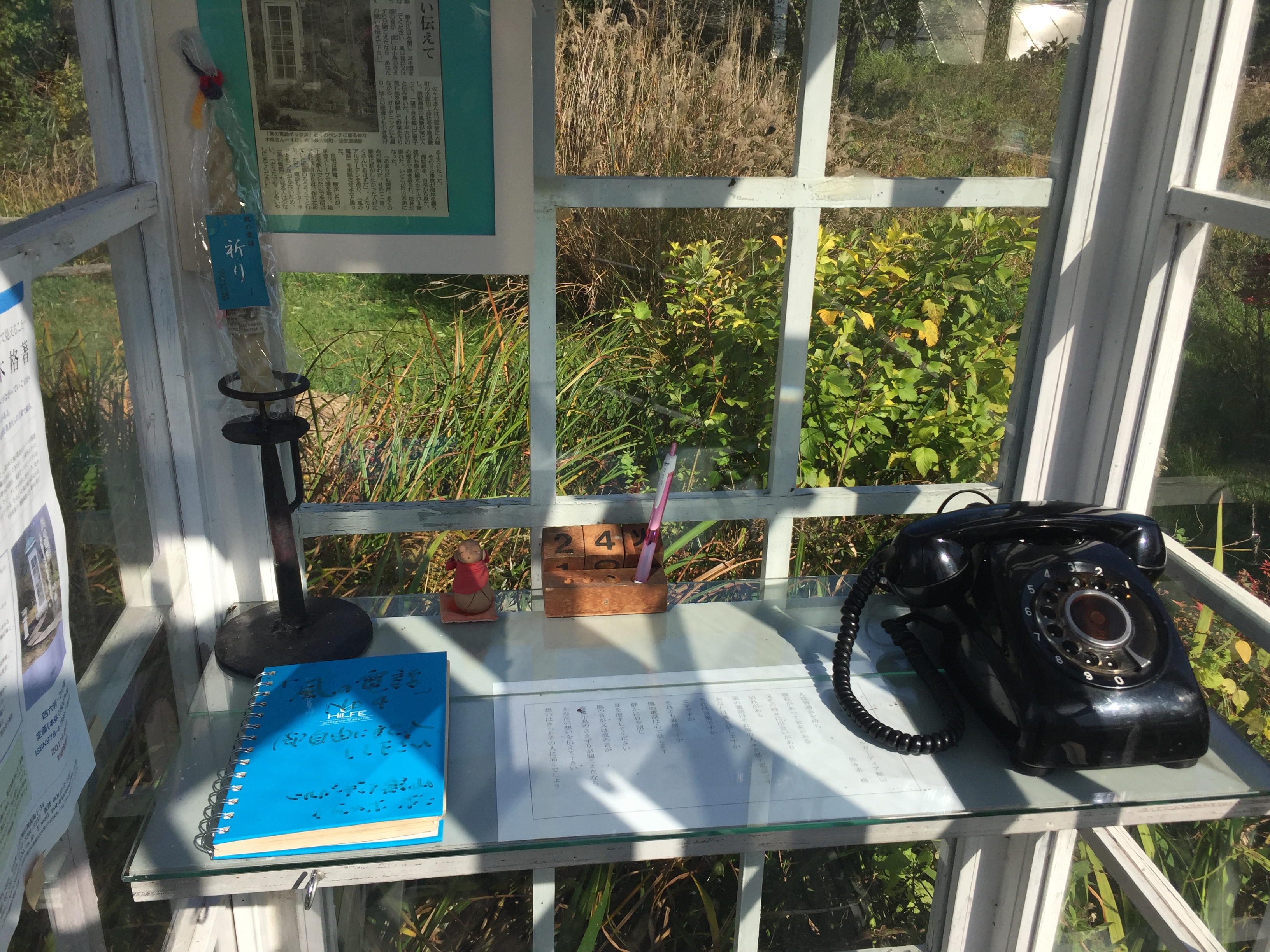
The phone is an old rotary with small holes for your fingers. To make a call, guide your number past zero and once you release, it will carry itself back to where it began. I’d forgotten how easy it was to mess these up. Jerk your finger out too soon, and you’ll never get connected.
The phone sits on a metal shelf inside a glass phone booth in the middle of a lush garden. The shape of your hand holding the receiver is like the shape of your hand holding a bundle of flowers for someone you loved. When I ask Mr. Sasaki why he chose a rotary phone for his phone booth, he says that the extra time it takes to dial is good. Gives you a chance to figure out what to say to the dead.
Most locals come after dark, or very early in the morning. They keep their grief private. If Mr. Sasaki sees someone out in his yard, on the phone, he pretends not to notice.
Death doesn’t end life, Mr. Sasaki tells me. One person dies, and all the others around them go on living.
Life continues.
Life continues, and so Mr. Sasaki has built something to help other people, and himself, continue. It is called The Phone of the Wind.
I am in Otsuchi, Japan, a small rural fishing village on Japan’s east coast. It is October, 2017. In 2011, a 9.0 magnitude undersea megathrust earthquake occurred just southeast of the island. It was the most powerful earthquake ever recorded in Japan, the fourth most powerful in the world since we began giving numbers to our catastrophes in 1900. The earthquake triggered a massive tsunami along the eastern, Pacific, coast with waves recorded of up to 133 feet.
Otsuchi’s population was 16,000. After the tsunami, ten percent of the population was dead.
 It’s called the Phone of the Wind, because the phone is not plugged into anything. Whatever you say will be carried on the wind. Beside the phone there is a small, lined book for visitors to write in. On the cover, it says it’s the fourth such book—three others have already been filled. I thumb through the pages. I’m not sure if that’s an invasion of privacy or not, but nearly all the writing is in Japanese, which I can’t read. Scattered throughout the book, photographs have been inserted.
It’s called the Phone of the Wind, because the phone is not plugged into anything. Whatever you say will be carried on the wind. Beside the phone there is a small, lined book for visitors to write in. On the cover, it says it’s the fourth such book—three others have already been filled. I thumb through the pages. I’m not sure if that’s an invasion of privacy or not, but nearly all the writing is in Japanese, which I can’t read. Scattered throughout the book, photographs have been inserted.
I stop at the first one I come across. A polaroid photograph with the date 11/21/16 written beside it. It’s a close-up of a girl posed behind a birthday cake. The cake is encircled by tall, skinny candles, many-colored, all lit, and in their center, sliced strawberries, raspberries and blueberries. A fruit...
You have reached your article limit
Sign up for a digital subscription and continue reading all new issues, plus our entire archives, for just $1.50/month.
Already a subscriber? Sign in




